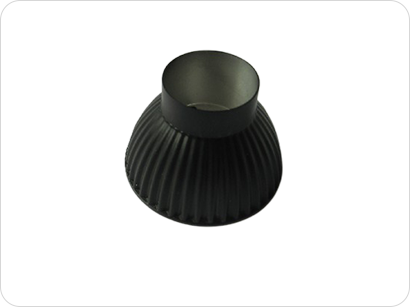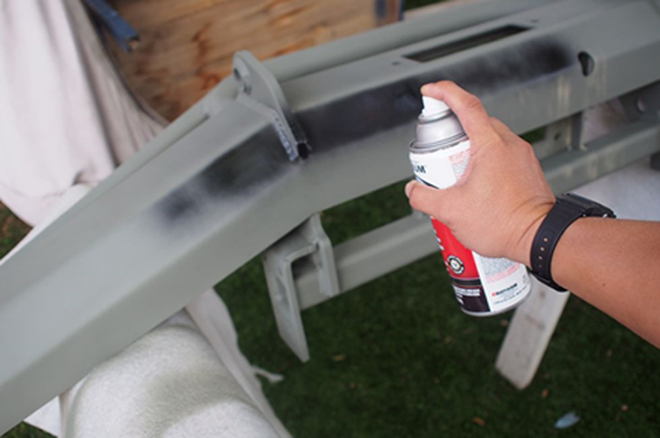Painting Surface Treatment

5 Benefits Of Steel Paint Finishing
Steel paint Finishing is just one of the high-quality services we deliver at Lycett Fabrications, and this finish often goes hand-in-hand with fabrication, welding and material processing. As an organisation, you may take steel paint finishing for granted but there are many reasons why it is favoured for applications of all shapes, sizes and specifications.Here we take a closer look at just five of the key benefits associated with steel paint finishing so you can discover a finish that is of the highest standard.
01
Protect Steel Structures From Corrosion
Protecting your steelwork, whether it is newly installed or has been with you for a longer period, is a must for all commercial and industrial buildings. Structural steelwork relies on good corrosion control practices, and without those, despite the durability of steel in general, unprotected steelwork can quickly fall into disrepair.
Corrosion occurs on iron and steel structures due to the presence of water and oxygen. There are many factors that affect the rate of corrosion, including the length of exposure to water, and the type and amount of atmospheric pollution. Localised corrosion is also particularly common.
Steel paint finishing is an easy and effective way to protect structural steelwork from corrosion, and modern, durable paint systems are used to achieve a desired result that will last for years to come. All our steel paint finishing services are delivered to the highest standard and are conducted in accordance with BS 5493:1977, which refers to the code of practice for the protective coating of iron and steel structures against corrosion, and BS EN ISO 12944-5:1998, relating to corrosion protection of steel structures by protective paint systems.
02
Embrace An Environmentally Friendly Solution
As one of the most commonly used practices for protecting steel, steel painting finishing techniques and systems have been continually developed since their introduction. The main consideration during their development was ensuring they comply with industrial environmental legislation whilst at the same time improving durability and performance for the commercial and industrial clients enlisting them.
Due to the introduction of the Environmental Protection Act 1990, it is now a legal requirement for applied paints, including those used to coat steel structures, to minimise the release of harmful volatile organic compounds (VOCs). The paint systems used by Lycett Fabrications comply with the latest guidelines and statutory requirements.
03
Harness Efficiency With Modern Paint System
We only utilise state-of-the-art paint systems across general and bespoke applications to ensure the best possible results and the highest level of efficiency. For general applications, the use of in-house painting and finishing technology combined with the experience and knowledge of our specialist team ensures coatings can be applied quickly and confidently creating an aesthetically pleasing and highly protective finish.
A dry filter booth is used for general applications whilst the modern airpress spray system is called upon for more bespoke projects. The airpress system uses the latest technologies to enable the application of thick coatings in high volume, which is great for projects that have a large area of steelwork to cover.
04
A Finish that Is Polished And Functional
Thanks to our carefully controlled operations, our steel paint finishing services produce an expert finish that not only performs on all fronts but is pleasing to the eye, which is great for exposed steelwork, a trend that is taking over across the commercial and industrial scene

05
Insulate From The Effects Of High Temperatures
Steel paint finishing is a must for improving an industrial or commercial building’s health and safety credentials. Paint systems are designed and developed to be non-reactive meaning they are effectively insulated from the effects of high temperatures that could generate fire, allowing you to protect the staff and visitors that are vital to the success of your business.
Find out more about Lycett Fabrications Steel painting services here.
Painting metal is different than painting other surfaces. The material is challenging to work with. Paint doesn’t stick as well to a metal surface as it does to wood or plaster. Also, metal is prone to oxidation and rust. When painting on metal, it’s essential to use a formulated paint for metal, especially if you want to control rust and weathering.Metal paints come in oil-based and water-based versions. Oil-based paint is trickier to work with, but the results are longer lasting. Water-based acrylic paints come in spray paint versions and can be overall more forgiving. Learn more about choosing paint types and several steps needed to prepare the metal for painting.
Preparation
Primer is a must for painting metal. If the metal surface has been painted before, you’ll need to remove old paint, rust, debris, grease, dirt using a wire brush or wire-brush tool. If the metal is smooth and has nothing on it, you’ll still need to scuff up the surface of the metal so the primer can stick to the surface. The pads will also help smooth away some metal imperfections.
Safety Considerations
Anytime you’re working with metal, make sure to protect yourself. Use a dust mask or respirator, protective goggles, and gloves. Also, work in a well-ventilated area. When grinding away rust with a wire rotary tool, use earplugs for ear protection.
What You'll Need Equipment / Tools
Preparation
Scuffing pads
Dust mask or
Goggles
Earplugs
Wire brush or wire brush drill attachment
Natural Bristle painbrush ( optional)
Materials
Water-based acrylic paint or oil-based paint for metal
Acetone
Rust remover (optional)
Mineral spirits (optional)
Instructions
Remove Old Paint and Rust
Use a wire brush to remove any loose or flaking paint and as much surface rust as possible. If a handheld wire brush is ineffective, consider using a wire brush attachment for your drill for highly degraded surfaces. If the rust has penetrated deep into the surface, soak the object in an appropriate rust remover and follow all steps as specified by the manufacturer. Wipe the surface with a damp cloth to clean any dust, debris, or rust that’s leftover. Remove remaining grease by wiping the metal with a shop rag dipped in acetone. Allow the acetone to dry.
Tip
Avoid using water when cleaning since it doesn’t effectively clean metal.
Scuff Up the Metal
If the metal doesn’t have paint on it or it’s smooth, take a scuffing pad and rub it along the metal. These pads will lightly etch the surface of the metal, which will allow the primer to stick more effectively.
Prime the Metal
If you couldn’t get rid of all the rust in the previous step, coat the metal with a zinc chromate primer that’s formulated for coating rust. After you have coated the area with this special primer, then apply a coat of self-etching primer. This primer should be specifically designated for metal, including a self-etching component. Read the label to verify that metals are an intended surface. The last consideration for primer is to be sure the primer is compatible with the paint you want to use since a primer can be either oil-based or water-based.
Closely follow the instructions on the primer label since they have different drying and cure times. If the metal is going outdoors,
Closely follow the instructions on the primer label since they have different drying and cure times. If the metal is going outdoors,
Apply Paint
If you’re debating whether to use spray paint or a paintbrush, the easiest way to paint metal is to use a can of spray paint. It is faster, but it does not create as hard of a finish.Here’s how to use spray paint:
oShake the can several times to mix the paint.
oHold the can 6 to 12 inches away from the metal, which will prevent the paint from pooling. Spray the object using long, sweeping motions (don't hold it in one spot). If you notice excessive dripping, wipe clean, back up, and start the process again.
oFor best results, apply up to three thin coats of spray paint and allow the paint to dry before applying an additional layer
If you want a longer-lasting finish, brush on the paint using oil-based paint. By painting the metal object with a brush, you can create a thick surface that will be more durable.
Painting metal using a paintbrush:
oMix the paint according to the manufacturer's specifications. If the paint feels too thick, it might need to be cut with some mineral spirits.
oOnce the paint is a desirable consistency, use a high-quality natural bristle brush to paint on a thin layer.
Tip
Oil-based paint tends to dry smooth, so you won’t need to worry about brush strokes if you apply a thin layer with a natural bristle brush.
Allow the Paint to Cure
The metal needs to cure for 36 to 48 hours before moving it. Ensure the object is in an area that won’t be affected by extreme temperatures or direct sunlight when drying.
When to Call a Professional Items that have significant rust may need the help of a professional painting contractor to see if the metal is salvageable or can be restored. You can even take appliances like washing machines and clothes dryers to an auto body shop and have them do the work. You’ll get a hard, professional finish, but that can be a bit expensive.
When to Call a Professional Items that have significant rust may need the help of a professional painting contractor to see if the metal is salvageable or can be restored. You can even take appliances like washing machines and clothes dryers to an auto body shop and have them do the work. You’ll get a hard, professional finish, but that can be a bit expensive.
